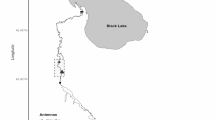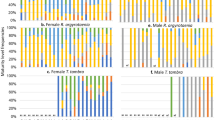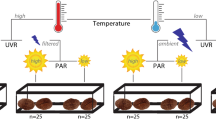Abstract
SEVERAL attempts have been made to show that spawning in the sea and in fresh waters, and also in terrestrial conditions, is regulated by temperature. Many examples could be quoted to demonstrate that the rule is for a species to spawn earlier and to develop more quickly in warm water; that, in other words, the period of spawning is early in tropical seas and conditions, and later to the north and south of the tropical belt, and that the period of growth is increased with lowering of temperature. The factors at work, however, are more deep-seated than they appear to be at first sight. That this is so is at once clear from two correlated considerations: (1) There is a period, sometimes a long period, of ripening with reference to which spawning is the culmination, and during which somatic changes and migratory results are produced; and (2) all the adults do not participate in the ripening and spawning.
This is a preview of subscription content, access via your institution
Access options
Subscribe to this journal
Receive 51 print issues and online access
$199.00 per year
only $3.90 per issue
Buy this article
- Purchase on SpringerLink
- Instant access to full article PDF
Prices may be subject to local taxes which are calculated during checkout
Similar content being viewed by others
Author information
Authors and Affiliations
Rights and permissions
About this article
Cite this article
MEEK, A. Environment and Reproduction. Nature 106, 532–533 (1920). https://doi.org/10.1038/106532b0
Issue date:
DOI: https://doi.org/10.1038/106532b0



